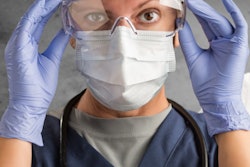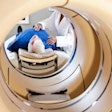
The COVID-19 pandemic has had an unprecedented impact on radiology departments and private practices around the world. Many imaging operations have experienced a sharp decline in volume as patients have delayed elective imaging procedures.
As the pandemic subsides, many radiologists are welcoming back patients, ramping up procedures, and gaining back volumes to pre-COVID-19 levels. But patients want to feel safe and secure as they return, so radiologists must implement practices and policies that ensure patient safety.
Radiologists have to consider what the "new normal" will be going forward. Odds are it will incorporate social distancing, patient screening, sanitation, novel forms of communication, and changes in radiology workflow to create an environment that feels safe to patients.
Changes on the fly
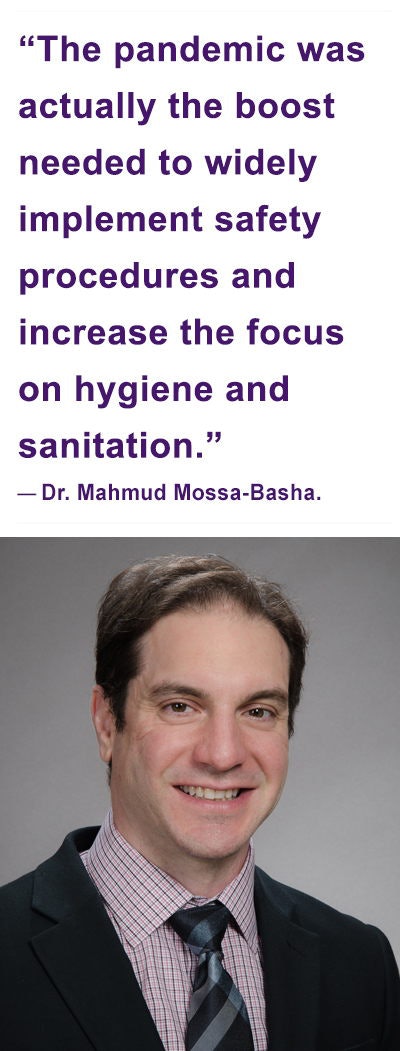
The sudden arrival of the COVID-19 pandemic in early 2020 forced radiology facilities to scramble to respond, Dr. Mahmud Mossa-Basha, chief of radiology at the University of Washington Medical Center and chair of the RSNA's COVID-19 task force, told AuntMinnie.com.
"During the pandemic, there were challenges at all levels in terms of workflow operations and implementing new operations on the fly to ensure patient, healthcare worker, and community safety," he said. "The pandemic progressed rapidly, and many departments didn't have time to thoroughly evaluate new safety procedures prior to implementation. They would evaluate them later."
Mossa-Basha said his department rapidly implemented a masking policy for all patients and employees. The department started screening at every door and closed entrances where it couldn't screen. Staff took temperatures and checked for symptoms. Patients with COVID-19 or suspected of having COVID-19 were isolated and imaged through glass.
Noncritical imaging procedures were semiautomatically rescheduled. Patients were able to reschedule using the department's self-scheduling system.
A needed boost
Many of the procedures put in place during the pandemic remain as radiologists show patients that they are concerned about patient welfare and safety.
"There has always been an emphasis on hygiene in hospital systems and radiology departments," Mossa-Basha added. "The pandemic was actually the boost needed to widely implement safety procedures and increase the focus on hygiene and sanitation, including handwashing, equipment and waiting room sanitation, and use of air purification systems."
Mossa-Basha said his department continues to use portable air purification systems in current waiting and imaging rooms and plans to install permanent systems in newly constructed rooms. Between exams, staff members still wipe and clean with antiseptic solutions all of the imaging surfaces and the floors. The imaging-through-glass procedures still remain in effect.
Mossa-Basha also reported that his department's telehealth usage grew.
"The pandemic pushed telehealth functionality to the forefront. We're primarily using telehealth for interventional and neurointerventional consults, and we believe that will remain in our system," Mossa-Basha said. "Many different things will persist in the virtual environment, including multidisciplinary conferences and meetings."
Imaging volumes were adversely affected by the pandemic. The University of Washington is a four-hospital system that saw its volumes decline by 40% to 60% in March and April 2020. The system took a cautious approach with rescheduling after the elective imaging and procedure postponement period, running at about 50% capacity to have time in between scans to clean equipment and waiting rooms. The system has been able to gradually bring volumes back up to slightly above baseline, according to Mossa-Basha.
During the pandemic, the University of Washington also restructured its modality-directed leadership, which remains in place.
"We created modality task forces. I serve as the MRI director and under me, the MRI operations team is organized across multiple hospitals," he said. "This approach has afforded us a way to synchronize our efforts across institutions, standardize our approaches, and track volumes and costs. We track a lot of metrics, which helps us tackle the issues that each modality faces individually."
A rise in advanced disease
Unfortunately, there are repercussions for delaying imaging procedures. Mossa-Basha and colleagues have seen an increase in cases of advanced disease.
"We're seeing a lot more advanced disease in terms of infection and cancer. This is due to elective procedure postponements and because many patients were afraid to come in for imaging. When they presented later, they had more advanced disease," he explained.
The COVID-19 pandemic also impacted staff members, with many experiencing burnout.
"Seeing sicker patients, being concerned about one's own health and that of loved ones, financial and social impacts of the pandemic, and the isolation associated with the pandemic can affect people," he said. "I think it had an impact in terms of burnout and the psychological wellness of our staff and faculty.
Mossa-Basha believes it's crucial for radiology leadership to take the following steps to maintain a department's wellness:
- Talk to staff members, and make sure they are doing well.
- Incorporate wellness activities into the department's operations.
- Develop peer support programs and groups.
- Emphasize work-life balance.
Mossa-Basha indicated that the pandemic experience will help the university system be better prepared to cope with the next major crisis, especially regarding having enough personal protection equipment (PPE) on hand and working to build financial and resource reserves to weather future events.
"Every pandemic has the potential to be very different in terms of the way disease is communicated, its degree of virility," he said. "But we now have many new policies and procedures in place that will help us transition and manage the next crisis."
Care that is safe
Patients are looking to feel comfortable and safe when they return for imaging, but academic centers need to balance those concerns with their own mission of education and research, Dr. Arun Krishnaraj, associate professor of radiology and medical imaging at the University of Virginia and chair of the American College of Radiology's Commission on Patient- and Family-Centered Care, explained to AuntMinnie.com.
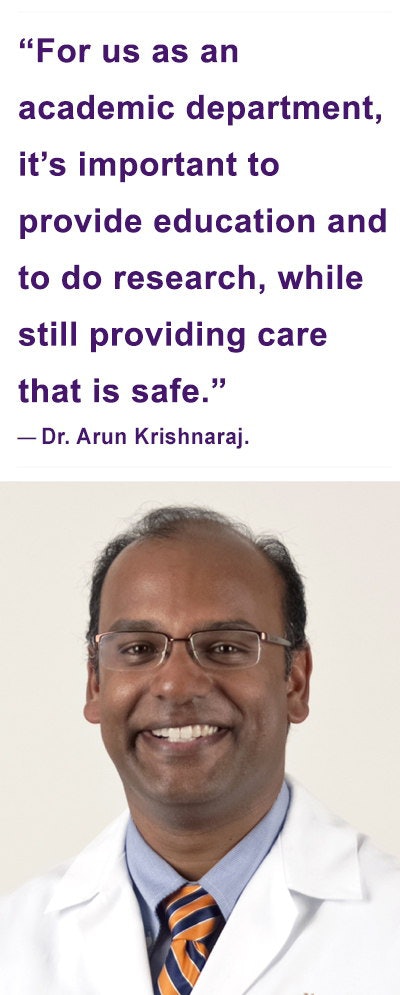
"For us as an academic department, it's important to provide education and to do research, while still providing care that is safe," he said.
Krishnaraj noted that radiology facilities -- especially academic centers -- took universal precautions during the pandemic, including testing patients for COVID-19, sanitizing waiting areas and equipment routinely between patient imaging, wearing N95 masks, and imaging through glass.
"Many of these precautions continue as patients return," he added.
Radiologists can be unmasked in reading rooms if they are vaccinated but still must be masked when meeting patients, according to Krishnaraj.
The department also purchased air purification systems for its conference and reading rooms, according to Krishnaraj, who indicated that the larger reading rooms have multiple filters.
Imaging volumes also dropped at the University of Virginia. But the department saw less of a decline in body imaging procedures -- about a 10% to 15% drop at the height of the pandemic early last summer -- than in breast imaging procedures, which experienced about a 50% decline during the pandemic's height as women postponed their screening mammograms, Krishnaraj said.
Other areas, such as interventional radiology, have generally remained steady in their volumes. Overall, imaging volumes have since returned and are about 30% greater than at prepandemic levels, he said.
"I frequently communicate with colleagues around the country in body imaging divisions, and it seems like a lot of departments have seen elevations in their imaging numbers that may be partly due to people missing screening during the pandemic. Patients have come back for screenings and are presenting with more complex illness and new disease that needs to be imaged. Imaging growth has bounced back because of the value of imaging, especially among hospitals that have a high volume of oncology patients," Krishnaraj explained.
The department also implemented a teleworking program for faculty and trainees during the pandemic, and it developed a telecommuting schedule that ensures onsite patient care and critical coverage.
"We benefited in multiple ways. We were able to have people read from home who couldn't come in for certain reasons, such as a lack of childcare or a need to support elderly parents. It generally improved work-life balance," Krishnaraj said.
Most of the hospital's staff members are back on campus now, but shifts where radiologists are working from home remain. Krishnaraj said he is a "huge proponent" of in-person communication, but he sees at least some component of work-from-home flexibility continuing.
"Establishing home workstations was a big move," he said. "This investment will pay off because of how it improves flexibility."
On the other hand, the combination of remote working and sanitation needed between imaging procedures led to about a 20% reduction in efficiency, which in turn caused some burnout among radiologists who felt pressure to be more productive to offset the reduced efficiency, Krishnaraj indicated.
To address burnout, the department established a wellness committee that makes faculty and residents aware of wellness resources. It has a faculty employee assistance program that faculty and residents can turn to for support if they are experiencing depression.
Krishnaraj noted three major lessons the University of Virginia learned from the pandemic:
- Conduct virtual learning.
- Provide clinical care remotely.
- Platoon a cohort system in a crisis situation.
SARS experience
Radiologists at Singapore General Hospital were able to draw on their experience with the severe acute respiratory syndrome (SARS) outbreak in 2003 when responding to the COVID-19 pandemic.
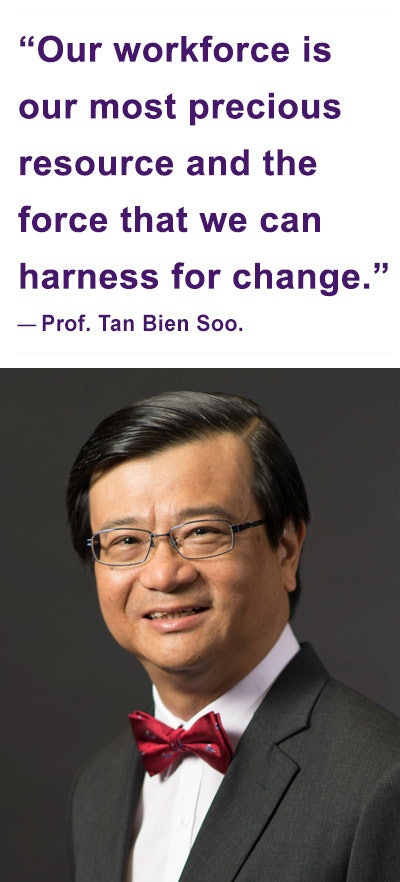
In general, because of their SARS experience, staff members were already primed for various levels of infection prevention and control. Most are fitted for N95 masks, for example. Everyone also undergoes annual infection prevention and control education, so there is familiarity with using PPE, Prof. Tan Bien Soo, senior consultant in the department of vascular and interventional radiology at Singapore General Hospital, and colleagues wrote in the American Journal of Roentgenology.
When COVID-19 arrived, the department was already primed for various levels of infection prevention and control. During the SARS outbreak, a shift system prevented cross-infection between teams working at different times or locations. The current subspecialty radiology team set up facilitated radiologist cohorts. The plan was updated to include new sites comprising a mix of subspecialty radiologic expertise, according to the team (AJR, June 2020, Vol. 214:6, pp. 1206-1210).
Mask distribution was centralized at fewer points to ensure PPE stock could be sustained for an extended period. Certain scanners were dedicated to isolation and high-risk cases. Access to the department was tightened, and patients were screened for symptoms.
The department configured mixed subspecialty teams to work from each reporting room. These mixed teams were separated physically to minimize cross-infection. Wherever possible, portable imaging was performed to reduce transport of infectious patients. The department also optimized its ventilation systems.
Hand sanitizers and disinfectant wipes became commonplace across the department during SARS. Many procedures remain in place today. For example, veterans of the SARS pandemic still disinfect their radiology workstations before starting work, according to Tan and colleagues. It is important to learn from past experience and to habitualize infection prevention and control practices in daily operations, Tan told AuntMinnie.com.
He said his facility adopted more telehealth appointments with patients.
"Our follow-up interventional radiology clinics are by video consultation if the patients do not need physical examination. Our patient appointments, preparation, and counseling are performed virtually or by telephone," he explained. "Telehealth is here to stay and will even expand postpandemic."
During the initial phase of the pandemic in 2020, nonurgent elective procedures and outpatient appointments were rescheduled at Singapore General after clinical teams reviewed them to ensure they were safe to be temporarily deferred, Tan said. When the situation stabilized in the second half of 2020, staff and resources were adjusted to catch up with the backlog of imaging and clinical appointments, he added.
"We have instituted various initiatives to increase capacity, such as extending operating hours, optimizing scan protocols to reduce scan time, and mitigating demand by engaging our clinical colleagues for appropriate imaging requests," Tan explained.
The department has experienced some burnout among its radiologists. Healthcare leaders should be very concerned about burnout among staff members, according to Tan, who said that a hospital survey showed that some radiologists reported significant burnout and anxiety. He advised that measures should be taken to prevent longer than usual work hours and increase enthusiasm and pride in one's job.
Tan indicated that Singapore General Hospital learned lessons from disease outbreaks of the past and present, and it has habitualized infection prevention and control practices in its daily operations.
"Understand that our workforce is our most precious resource and the force that we can harness for change," he said. "Realize the future of healthcare is phygital (the use of technology to bridge the digital and physical worlds), and respond to meet the needs of patients."





